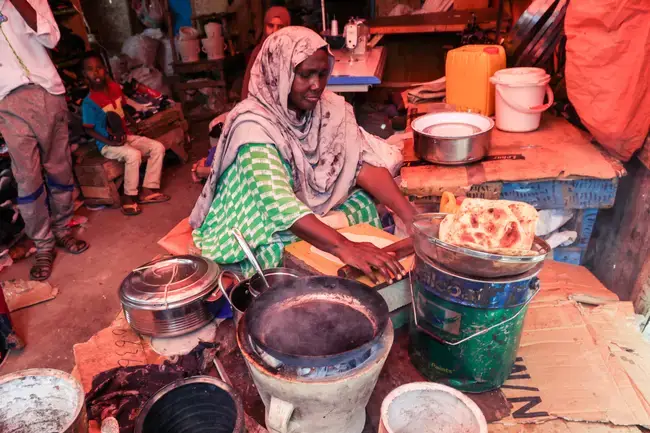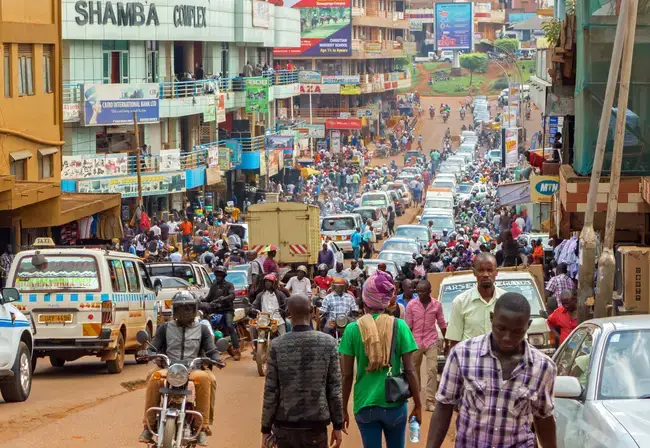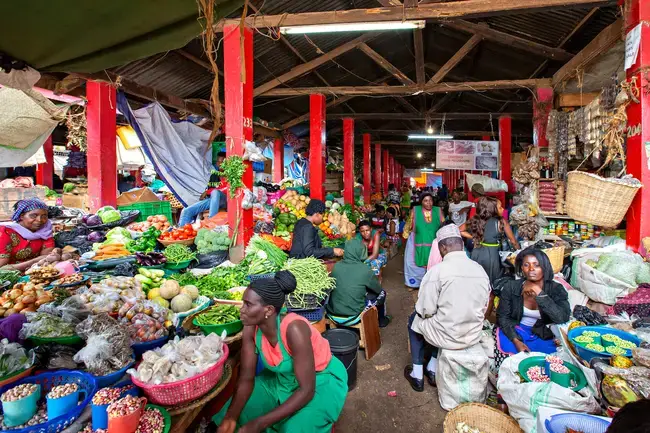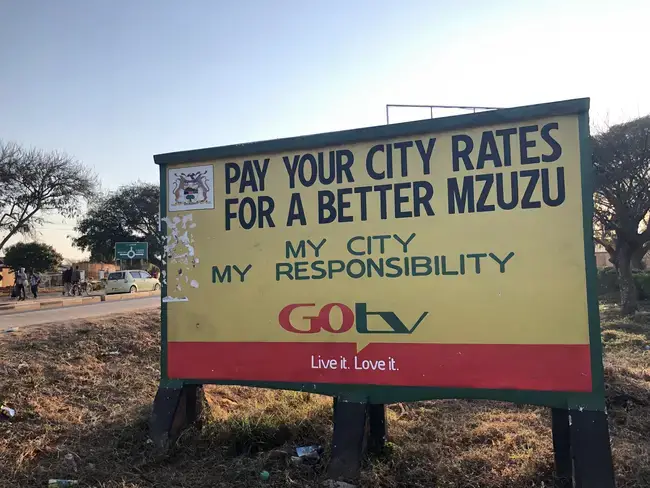Introduction
This initiative has been requested by the European Parliament. It is implemented by European Commission and UN-Habitat, supported by the International Growth Centre. These partners are working to identify relevant measures to help mobilise financing for urban development at all levels of government. The work has been undertaken through case studies conducted in Dakar (Senegal), Hargeisa (Somaliland, Somalia), Kampala (Uganda), Kisumu (Kenya), Mzuzu (Malawi), meetings with experts and practitioners, and empirical literature. The initiative works with an Advisory Group, chaired by Sir Paul Professor Collier from the University of Oxford, and consisting of representatives from the European Investment Bank, African Development Bank, UN Capital Development Fund, UN Economic Commission for Africa, and United Cities and Local Governments.
Prof. Sir Paul Collier
Blavatnik School of Government
University of Oxford
Prof. Edward Glaeser
Harvard University
Massachusetts, USA

Maimunah Mohd Sharif
Under-Secretary-General and Executive Director of UN-Habitat
Cities can be engines of productivity, but only when their development is properly planned and governed. This includes aligning spatial and economic development to facilitate access to finance. This can be own revenues, national government transfers, and external finance; all necessary as city managers consider development projects, matching public funds to private financing to sustain critical infrastructure and services.

Jan Olbrycht
Member of European Parliament
It has been fascinating to learn of the importance of flexibility and individual approaches in different contexts, but also that of pragmatism - which are crucial in responding to the surge of urbanization in low-income countries.
Urbanisation in Sub-Saharan Africa is rapidly increasing, generating a massive need for investments in urban infrastructure. More than half of the residents in African cities live in informal housing, unemployed or relying on informal jobs. The society faces a huge challenge in providing infrastructure and basic services for liveable and productive cities. Evidently there is a connection between the trajectories of economic transformation, multi-level governance, and financing urban development. This policy brief focuses on three core issues: improving investment planning, raising local revenues, and enhancing access to external finance.
Prof. Sir Paul Collier
Blavatnik School of Government
University of Oxford
The working paper seeks to synthesise findings from fact-finding missions as well as deliberations at the meetings of the Advisory Group, and other engagements with experts and city leaders. It integrates the informed views of decision makers at various levels of government, as well as the expertise of development cooperation practitioners and academia on why it has become increasingly urgent to escalate investment from all sectors and sources in cities in developing countries, and to identify concrete and actionable measures that could help alleviate constraints on mobilising finance for sustainable urban development.
Prof. Edgar Pieterse
Director
African Centre for Cities
Urbanisation in Sub-Saharan Africa is rapidly increasing, generating a massive need for investments in urban infrastructure. More than half of the residents in African cities live in informal housing, unemployed or relying on informal jobs. The society faces a huge challenge in providing infrastructure and basic services for liveable and productive cities. Evidently there is a connection between the trajectories of economic transformation, multi-level governance, and financing urban development. This policy brief focuses on three core issues: improving investment planning, raising local revenues, and enhancing access to external finance.
Gerald Muscat
Head of Regional and Urban Development
European Investment Bank
Serge Allou
Technical Advisor
United Cities and Local Governments
Fuelled by population growth and rural-to-urban migration, urbanisation in Sub-Saharan Africa is rapidly increasing, generating a massive need for investments in urban infrastructure. Africa urbanises at lower income levels and without the same degree of productivity increases seen in other regions. More than half of the residents in African cities live in informal housing, and three-quarters of this population is either unemployed or relies on informal jobs. The society faces a huge challenge in providing infrastructure and basic services for liveable and productive cities while accommodating their rapidly growing urban population.
The initial phase of this initiative has been dedicated to reviewing the issues crucial to addressing the above. Whilst the study identifies areas where more work is needed, evidently there is a connection between the trajectories of economic transformation, multi-level governance, and financing urban development. This policy brief focuses on three core issues: improving investment planning, raising local revenues, and enhancing access to external finance.
Improve investment planning
When planned responsibly and based on sound, but not necessarily exhaustive, cost/benefit analysis and supported by adequate regulations, the financing and development of infrastructure can be used as an engine for the development of institutions, policies, and capacities at all levels and across all sectors of governance.
To this end, the mandates of all levels and sectors of government should be clear, and without gaps and overlaps. All relevant levels and sectors of government must be involved in making decisions on investment, instead of just those involved in collecting taxes and other revenues. It is also crucial to improve the effectiveness of managing urban development through better collaboration between different levels and sectors of government. Further, the success of efforts to decentralise responsibilities to subnational levels is highly dependent on existing governance systems and traditions, even if they are supported by fiscal devolution and authority of sub-sovereign borrowing.
Prof. Sir Paul Collier
Blavatnik School of Government
University of Oxford
Gerald Muscat
EIB
In 2010, the government of Uganda separated the elected political arm of the city from its management functions, establishing the Kampala Capital City Authority (KCCA) that was tasked with management and operations responsibilities under the Minister of Kampala and Metropolitan Affairs. This reform streamlined certain city functions and made it easier to align them with national priorities; however, there was no clear delineation of the relationship between the various authorities that governed Kampala. Disagreements over these have therefore brought many projects to a standstill. The KCCA Act amendment enacted in 2020 attempts to clarify the decision-making hierarchy between the various Kampala authorities, specifying the roles and responsibilities of governance actors and extending broader territorial planning across the Greater Kampala Metropolitan Area.

Urban planning is crucial to prepare for the orderly expansion of cities to guide investment, prepare subdivisions of land and install skeletal infrastructure before building. Retrofitting informally built areas is complex and much more expensive.
The Hargeisa case study shows that planning for future expansion is not only useful for capturing the gains from rapid urbanisation through exaction, but also for improving future urban investment. The city government has implemented a system of 'in-kind' land value capture, or exaction through land readjustment. Within this system, landowners on the outskirts of the city who apply to convert their land from rural to urban land use must provide the city government with 30 per cent of the asset. In this way, the city can access the land it needs to provide public infrastructure to service a growing city. At the same time, rent from this land offers the city a valuable source of additional income to pay for the infrastructure development.

Promote urban planning that is suited to the context of widespread informality well in advance of expansion of cities to make sure that investment is guided by coherent plans. It is also important to link long-term urban spatial and physical planning and the financing of urban investments with a strategic approach to urban development that determines priorities and phasing and embeds long-term investment needs in the budgeting cycles of ministries and municipalities.
The execution of good plans and projects is equally critical. Municipalities and municipal entities must build suitable supply chain management systems for infrastructure delivery, i.e., control frameworks for the planning, design and execution of infrastructure projects, project tracking, and performance monitoring that are able to better deliver value for money by optimally using resources to achieve intended outcomes while minimising the scope for corruption.
Responding to the surge in urban population seems to result in either the time-consuming process of building capabilities to harmonise goals and collaborate effectively, or a tendency to address the urgency to develop infrastructure without any consideration of the former. However, infrastructure development cannot be put on hold while perfect policies and institutions are put in place. These ends need not be mutually exclusive: investment in urban development does not have to be withheld until fully capable institutions are in place, nor do governments need to resort to “non-invasive” planning and building of urban infrastructure regardless of institutions and policies.
Use urgent investment as a catalyst for institutional development so that it simultaneously supports efforts to build institutions as well as strengthen regulations. Determine the types of infrastructure and services needed to prioritise scalability and the release of transformative potential.
Raising local revenues
Optimising own source revenue (OSR) is critical to sustainably enhance the financial position of cities. Opportunities for OSR optimisation often revolve around streamlining tax policy and enhancing compliance, both of which are impacted by digitalisation and the strengthening of the social contract. Yet, such administrative reforms are decisively dependent on strong leadership, and the will and ability to overcome vested interests.
David Jackson
Director of Local Development Finance
United Nations Capital Development Fund (UNCDF)
Samuel Sserenkuuma
Kampala Capital City Authority
Uganda
Kampala has greatly improved its revenue collection from around US$ 1 million in the financial year 2010/11 to US$ 25 million (24 per cent of KCCA budget) in the financial year 2018/19. Increased tax compliance was achieved through digitalisation, massive taxpayer sensitisation, training revenue collectors, conducting revenue audits and allowing taxpayers to pay in instalments.

Land-based finance is one of the most promising – and underutilised – OSR streams that can be leveraged to strengthen urban management more broadly, even though it can be a complex undertaking. The obstacles to harnessing this source of revenue include out-of-date or non-existent land cadastres, complex and informal land tenure systems, lack of systematic property addressing systems, insufficient professional capacity in surveying and valuation and the costs of these activities. Technological innovation, such as using GIS to geo-locate properties and create up to date digitised land and property records, can be used to overcome these problems. Land-based finance can also be improved through simplified valuation methods.
Hargeisa uses a simple and low-cost area-based method to tax property, calculating the tax value by multiplying a building's size with a rate based on its location. This requires only information on the building's width and depth, its number of floors, and the location band as set out by the City Council. This simplicity allows for easier maintenance and regular updating of the register, and revenues have increased by a factor of four since 2008.

Nonetheless, fully leveraging these tools will require local governments to build capacity, show willingness to experiment, and overcome resistance from powerful landowners. Some reforms, while technically promising, can easily fail if the broader incentive structure is not considered.
The Kisumu County Government has focused on digitalising its tax collection processes, undertaking capacity building initiatives, updating its valuation roll, outsourcing property tax arrears collection, and acquiring its first credit rating. However, these efforts have faced technical implementation problems, capacity bottlenecks, budget constraints and vested interests in the status-quo by landowning elites and tax collectors, who have been able to undermine fundamental changes to OSR systems. A lack of progress in OSR reform has, in turn, also compromised the County government’s ability to access external sources of funding.
Help national governments to incite local governments to fully leverage their existing tax authority by associating transfers and local revenue, and increase transparency through national government data and reporting requirements. Support local revenue optimisation by reducing tax complexity and focusing collection on the most lucrative tax sources and on incentives for reform.
Consider improving ways of capturing land value increase and other revenues for the public sector. Such reforms should aim for small incremental changes and introducing transparency in the land management system to harness the support of landowners.
While it is important for building the financial capacity of subnational authorities, improving OSR may not provide sufficient finance for investment; indeed, in most countries, we expect the main sources of revenue for intermediate cities to remain as 'transfers' (conditional, unconditional and/or contractual) from the national to the local level through revenue sharing formulae. Financing sustainable urban development thus needs to focus on coherence among all components of an integral system of financing, which includes direct investments of state authorities at the city level and various forms of predictable intergovernmental transfers to local governments, efficient collection of OSR, and private and external investment.
In Malawi, central government transfers to cities make up less than 20 per cent of the total budget, while for rural local authorities, they account for 80 per cent. Development partners have provided some initial investments to ameliorate urban challenges. Mzuzu, the third largest city in the country, is an example of how intermediary cities, where revenues are often incredibly low and capacity is minimal, can innovate and lead the way to municipal finance reform. Its Revenue Mobilisation Programme – a simple and fit-for-capacity property valuation system – has yielded a seven-fold increase in revenues. Yet legal barriers in the current property valuation process inhibit further progress, underlining the importance of creating innovative tools that are legally in conformity with national policies. Thus, revenue pilferage, a lack of capacity for financial management, land ownership disputes between different spheres of the government, and a nation-wide rural policy priority bias continue to prevent Mzuzu from achieving a sustainably stable financial position.

Focus more extensively on the design elements of intergovernmental transfers to ensure that allocation is transparent and commensurate to decentralised mandates. Assist in enhancing capacity to collect OSR, and in effective budgeting and expenditure before exploring other financial options. Hold the city accountable for good financial management at the local level as it is key to achieving creditworthiness.
Enhancing access to external finance
It is often expected that improving low- and middle-income countries’ access to external finance, especially at the subnational level and without sovereign guarantees, will help finance urban development projects. However, despite the strong link between financing urban infrastructure and achieving top-tier global goals, finding ways to attract private and/or foreign capital into public infrastructure investments through loans, municipal bonds, and public-private partnerships, especially in low-income country contexts, has proven to be difficult. The ability to tap into domestic and international financial markets, especially for subnational governments, needs highly developed legal and institutional frameworks, a reliable system of intergovernmental transfers and significant capacity.
Subnational borrowing is often restricted by regulations to guard against unsustainable debt obligations, and remains risky and costly for both debtors and creditors. Long-term debts should only be contracted for the purpose of capital expenditure on property and equipment, and be denominated in local currency and not pegged to the foreign exchange. Further, debt transparency and disclosure must be mandatory. Issuance of guarantees remain problematic and can generate significant implicit contingent liabilities.
Gerald Muscat
EIB
Dakar attempted to launch a municipal bond in 2015. However, despite having been pre-approved, this move was overridden by the national government at the last minute over fears of large debt obligations and lack of precedence in this area. There have since been discussions on the national government’s legal authority to reject the local government’s decision.
Even where borrowing is legally permitted, many cities still lack the revenue streams, financial management capacity and creditworthiness to take on debt. Development partners can be crucial in facilitating creditworthiness reform, both in terms of technical and financial assistance.
In Kampala, many reforms in revenue systems and administration were centred on the goal of the KCCA becoming creditworthy and reducing investment risks. Since 2012, the KCCA built on efforts of the World Bank Public Private Infrastructure Advisory Facility Sub-National Technical Assistance Programme’s ‘Financial Recovery Action Plan’, aiming to reduce the city’s indebtedness and achieve clean audit reports. In 2015/16, the KCCA was given a national scale rating of A- in the short term, and A in the long term by The Global Credit Rating Co, boding well for the progress it had made within the national context.
Treat external financing as a part of a larger system of national and subnational finance. Lending to the sovereign level and ‘on-lending’ or ‘on-granting’ to the local level without additional guidance or conditions can create perverse incentives for local finance reform towards cost recovery.
Focusing only on projects that generate sufficient revenue to repay investments may lead to disregarding the need for public or social goods where direct monetary returns may be insufficient but the overall public benefit is significant. Such projects may need support from local or central government to become bankable so that their overall public benefits can be realised. Where development partners become involved in project design, they may wish to promote transformative projects that help alleviate poverty and support green agendas, while also promoting cost recovery within affordability constraints.
Development partners were crucial in facilitating creditworthiness reform, as demonstrated in the case studies, both in terms of technical and financial assistance. It can be difficult for cities to justify investing in internal creditworthiness reforms year after year, since its returns to the public are long term and thus generate little potential for short-term political gain.
Budget support in a decentralised context can be a catalyst to tighten economic and budgetary frameworks and to strengthen the investment and business environment, and reduce investment risks, thus enhancing sectoral policies, institutions, and regulatory frameworks. Therefore, it is essential to exploit synergies and complementarities with other tools such as blending to increase their effectiveness. Subnational application of Public Expenditure and Financial Accountability and Tax Administration Diagnostic Assessments can trigger useful reforms to improve financial management and tax administration, and thus increase creditworthiness.
Technical assistance can be linked to loans to encourage policy reforms; guarantees provided by blended finance can offset the risk of lending to local levels. Loan conditions can be set leading to progress in policy and frameworks, especially in cost recovery and tariff reforms. Pricing incentives (reducing the interest or extending maturity of loans) may be considered as a stimulus to regulatory reform and to enhance capacity at the local level.
Borrowing at subnational level without a sovereign guarantee is often seen as the next ‘big’ solution to overcome the infrastructure gap. Creating municipal investment banks or other pooled credit facilities can be a bridge to direct subnational borrowing, building on the framework for central-local fiscal relations. However, strong governance and risk allocation are needed to prevent subnational borrowing from creating contingent liabilities.
Support intermediary financial institutions such as municipal development banks and funds, which have more capacity to handle investment programmes at subnational level than intermediary cities. A stable revenue base must be present for efficient lending through municipal investment banks.
The working paper seeks to synthesise findings from fact-finding missions as well as deliberations at the meetings of the Advisory Group, and other engagements with experts and city leaders. It integrates the informed views of decision makers at various levels of government, as well as the expertise of development cooperation practitioners and academia on why it has become increasingly urgent to escalate investment from all sectors and sources in cities in developing countries, and to identify concrete and actionable measures that could help alleviate constraints on mobilising finance for sustainable urban development.
Hamdan Majeed
Managing Director
Think City Khazana Nasional Berhard
Malaysia
Manuel de Araújo
Mayor of Quelimane
Mozambique
Raf Tuts
Director
Global Solutions Division
UN-Habitat
Serge Allou
UCLGA
Lennart Fleck
UN-Habitat
Gerald Muscat
EIB
Edlam Yemeru
UNECA
Prof. Anthony Venables
Gerald Muscat
EIB




